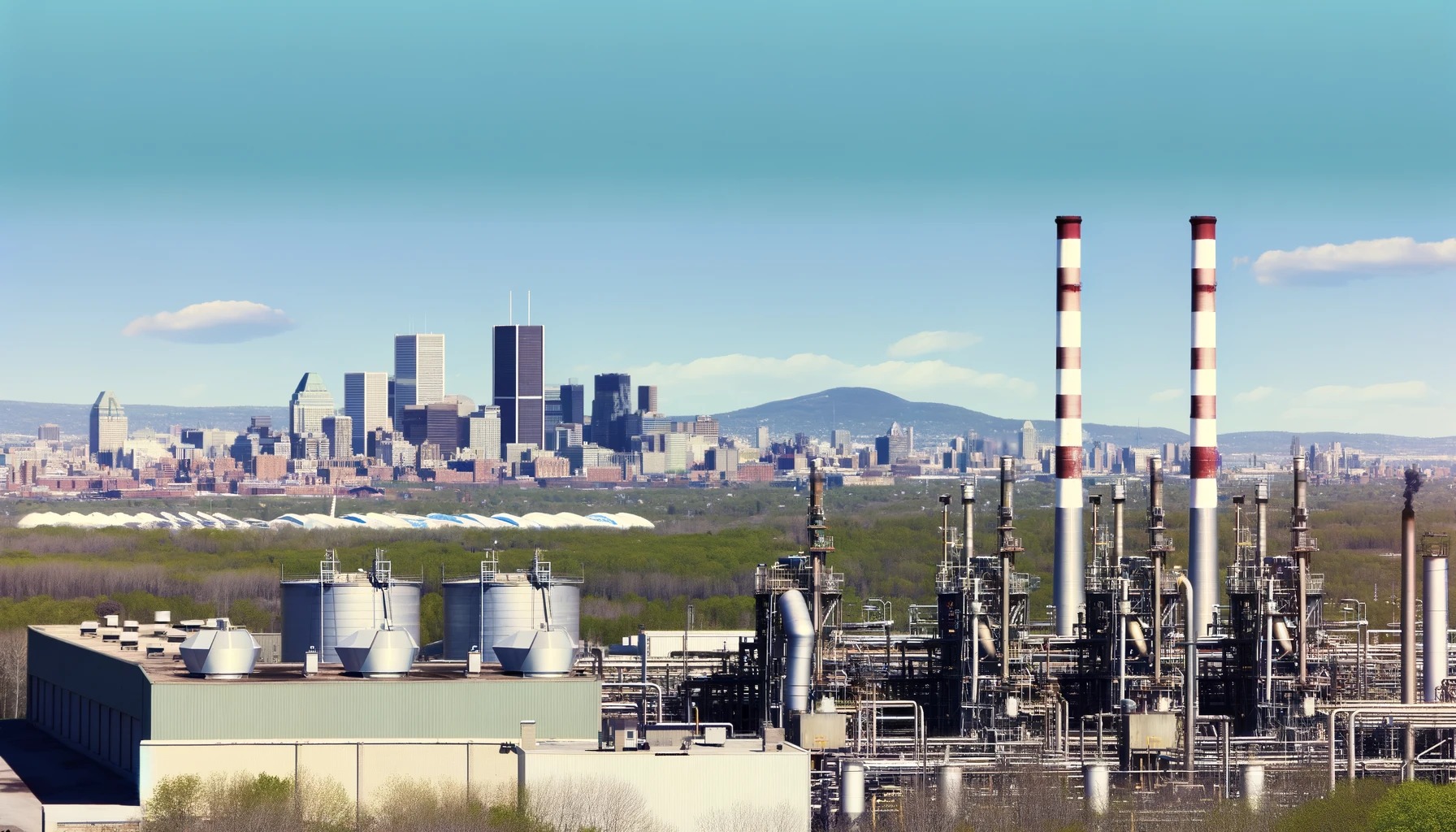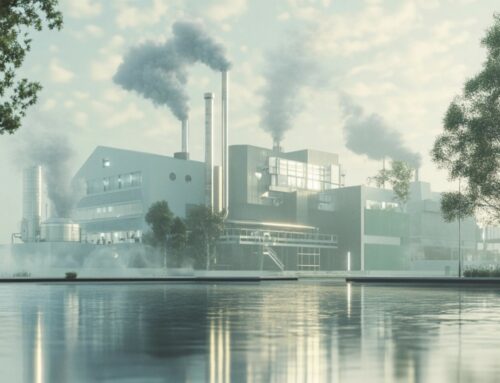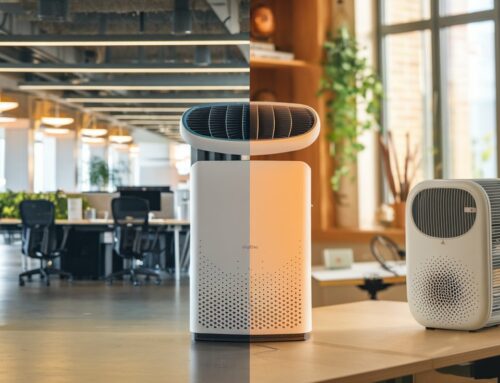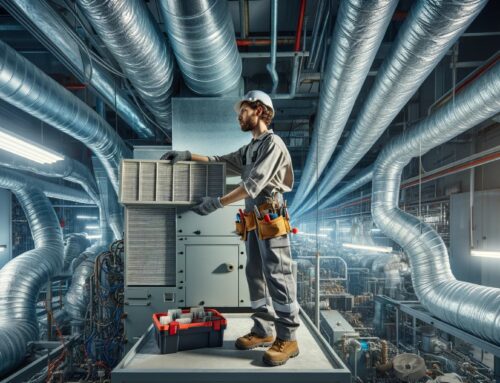February 28, 2024
Industrial Air Quality Compliance in Montreal: Our Expert Guide

In Montreal, navigating the complexities of industrial air quality compliance, including safety inspections and regulatory documents, is a critical task for businesses aiming to ensure their operations are both environmentally responsible, sustainable, and legally sound. As we delve into this topic, we focus on understanding the environmental compliance and regulatory compliance that govern air quality in an industrial setting while exploring practical strategies for adherence to regulatory documents and industry standards. Our collective experience underscores the importance of staying informed and proactive in environmental stewardship and sustainability, reflecting our commitment to safeguarding both our community’s health and safety and our planet’s future, with organizations playing a key role. Through collaboration, shared knowledge, and sustainability information, we aim to demystify the process of achieving compliance with air quality standards through environmental protection audits.
Regulatory Framework
Q-2, r. 4.1
Q-2, r. 4.1 sets specific air quality standards in Montreal for environmental compliance, environmental protection, and compliance obligations. It’s crucial for us to understand these regulations to ensure our industrial operations comply with regulatory compliance, environmental compliance, and meet our compliance obligations to avoid compliance issues.
Failing to meet these compliance obligations and safety standards in regulatory compliance can lead to hefty penalties in compliance management. We must recognize the importance of compliance with safety regulations and adapt to regulatory and legislative changes, not just for legal reasons but also for the health of our community.
Legislative Requirements
Both federal and provincial environmental legislation and regulations govern air quality in Canada, including legislative changes and compliance obligations. Staying informed about these legislative changes and regulations helps us avoid legal issues and ensure safety and regulatory compliance.
We regularly review updates on legislation changes. This proactive compliance management approach ensures we’re always compliant with the latest regulations and safety requirements for regulatory compliance.
ISO 14001 Impact

ISO 14001 certification has significantly benefited our environmental management efforts, regulatory compliance, and safety regulations for organizations. It supports compliance with strict air quality standards and regulatory changes by promoting continuous improvement within our organization, focusing on environmental and safety regulations.
Adopting ISO 14001 practices means we’re committed to reducing our environmental footprint while meeting regulatory demands, ensuring compliance management, adhering to safety standards, and regulations.
Businesses aiming to ensure a safe working environment should consider commercial air quality testing, a crucial step in complying with Montreal’s stringent air quality regulations.
Ontario EPS Overview
Comparing Ontario’s Environmental Protection Standards (EPS) with Montreal’s regulations reveals some differences in regulatory compliance and EHS legislation that impact organizations operating across both areas.
Understanding these jurisdictional nuances in specific regions is vital for us as it informs how we manage operations and remain compliant in diverse regulatory landscapes, ensuring effective compliance management across different jurisdictions and regulations.
For homeowners concerned about indoor air quality, residential air quality testing offers a comprehensive evaluation, ensuring your living space meets health and safety standards.
Permit Application Process
Discharge Permit
To start, obtaining a discharge permit is crucial for any business in Montreal releasing regulated pollutants to ensure regulatory compliance with environmental regulations and effective compliance management. The first step involves submitting an application to the local environmental authority, ensuring regulatory compliance with jurisdictions’ regulations through compliance management. This document must detail the types and quantities of emissions for environmental regulations, standards, and compliance management.
Next, we need to undergo an evaluation process. Here, authorities assess if our operations meet the set standards for air quality compliance in Montreal, considering environmental regulatory changes across jurisdictions for companies. Once approved, we receive the permit but remember, its duration is not forever, and we must track regulatory changes. We must renew it periodically. Also, keeping emissions within permitted levels is essential for compliance with environmental standards and adapting to regulatory changes to maintain this permit.
Documents Required
For a smooth application process, gathering all necessary documents beforehand to ensure compliance with standards is key.
-
Essential documents include:
-
Environmental impact assessments.
-
Emission data reports.
-
Facility operation details.
-
Accurate record-keeping cannot be overstressed; it ensures compliance with environmental standards and aids during renewals or inspections amidst regulatory changes across jurisdictions. Common mistakes often include outdated information, incomplete records, or not keeping up with regulatory changes—avoid these at all costs to prevent delays in your industrial air quality compliance efforts in Montreal.
Issuance Process
The timeline for obtaining an emissions permit, influenced by compliance, regulatory changes, and EHS legislation, varies but generally spans several months in duration. It starts with our application submission followed by a technical review phase where every detail, including compliance and standards changes, counts.
Public consultations can also influence this stage significantly. Engaging positively with the community can streamline this part of the compliance process, adapting to changes and standards across jurisdictions.
A tip for expediting approval? Ensure all documentation submitted is thorough and precise from the get-go—this minimizes back-and-forth clarifications that slow down issuance.
Compliance Strategy
EHS Regulations
In navigating the landscape of industrial air quality compliance in Montreal, key Environmental, Health, and Safety (EHS) regulations, legislation, standards, and jurisdictional changes play a crucial role. These regulations, including EHS legislation changes and compliance standards, are designed to protect both the environment and human health. They set limits on emissions and require regular monitoring.
To stay compliant, we must understand how these EHS rules and changes fit with other compliance standards and legislation requirements. This means integrating them into our broader compliance programs. For keeping up with changes in EHS regulations, compliance, legislation, and standards across countries, resources like government websites and industry newsletters are invaluable.
ISO 37301 Elements
The core elements of ISO 37301 focus on establishing a robust compliance management system, accommodating standards, jurisdictions, changes, and countries. Implementing ISO 37301 helps us streamline our compliance efforts with EHS legislation standards, adapting to changes across different jurisdictions effectively. It lays out clear guidelines for maintaining regulatory compliance and adherence to EHS legislation standards across all operations in different jurisdictions.
Leadership commitment is essential for achieving ISO 37301 certification. Without it, implementing and sustaining comprehensive EHS compliance programs, including standards and changes across countries, becomes challenging.
ESG Sustainability
Linking Environmental, Social, and Governance (ESG) sustainability goals with our air quality initiatives, ehs compliance, and standards changes brings multiple benefits. Improving air quality directly supports broader environmental objectives and compliance with EHS standards within the ESG framework, reflecting necessary changes.
Methods to measure and report on ESG performance include:
-
Tracking emission reductions.
-
Conducting regular environmental audits.
-
Reporting progress in sustainability reports.
These steps help us demonstrate our commitment to not just meeting but exceeding regulatory expectations and compliance standards for air quality, incorporating EHS changes.
Sampling and Calculations
Atmospheric Dispersion
Atmospheric dispersion models are our tools for predicting how pollutants spread in the air, reflecting changes and adhering to EHS standards. These models help us understand where pollution from factories will go, reflecting changes in countries’ standards. In Montreal, factors like wind speed, temperature, changes, and the city’s layout affect this spread.
We use these models to plan how to reduce air pollution, ensure compliance with changes in standards across countries. They show us areas that might get more polluted. This way, we can work on lowering emissions in those countries and jurisdictions first, focusing on EHS changes.
Sampling Emissions
To check if industries in different countries follow air quality compliance and EHS standards, we need to sample their emissions. This means collecting air samples from factory chimneys for EHS compliance and testing them against standards. In Montreal, there are standard EHS ways to do this cookie sampling compliance.
It’s important for factories to test their emissions often. This shows they are in compliance with EHS standards and changes for clean air.
When sampling emissions, we use special equipment:
-
Filters catch particles from the smoke.
-
Gas analyzers measure harmful gases.
-
Flow meters tell us how much gas is moving through a chimney, ensuring compliance with EHS standards.
Internal Audits and Risk Management
Best Practices
We’ve learned that audits play a crucial role in maintaining air quality compliance with EHS standards. These audits help us identify areas for improvement. Innovations in pollution control technology are also pivotal. They offer Montreal industries new ways to comply with EHS standards and reduce emissions effectively.
Engaging our employees in these efforts is key. We recommend regular training sessions and workshops. This way, everyone understands their role in compliance with EHS standards in keeping the air clean.
Risk Management
Non-compliance with EHS air quality standards and regulations can lead to serious risks. These include fines and damage to our reputation. To manage these risks, we conduct thorough EHS standards-compliant risk assessments of our industrial emissions.
We then develop strategies to mitigate these risks. For example, investing in better emission control technologies for EHS compliance or improving employee training programs to meet standards.
Critical Controls
Several critical controls, including EHS standards and compliance, are essential for managing our industrial emissions effectively.
-
Efficient filtration systems.
-
Regular maintenance schedules.
-
Continuous monitoring of emission levels.
These EHS controls not only help us comply with regulations and standards but also improve our environmental performance overall.
Monitoring and maintenance protocols ensure that these controls remain effective and in compliance with EHS standards over time.
Managing Regulatory Changes
Transitioning Obligations
In the ever-evolving landscape of industrial air quality compliance and EHS in Montreal, we’ve learned that adapting to regulatory changes is crucial. Over time, these EHS compliance obligations shift, often becoming more stringent to protect our environment and health. We’ve found that staying ahead involves understanding these changes deeply and adjusting our EHS compliance operational practices accordingly.
To navigate these transitions smoothly, we seek out support mechanisms designed for industries like ours, focusing on compliance and EHS. These can include government-led compliance guidance programs or industry-specific EHS workshops. They provide us with the EHS compliance tools and knowledge needed to meet new standards efficiently. By doing so, we ensure not only EHS compliance but also contribute positively to our community’s well-being.
Regulatory Updates
Keeping up-to-date with EHS regulatory updates is another key aspect of maintaining air quality compliance in Montreal. Recent changes in EHS compliance often come with little warning but have significant implications for our existing frameworks. We make it a point to analyze how each EHS compliance update impacts us directly and what steps we need to take next.
Integrating these EHS compliance updates into our operations seamlessly requires a proactive approach. We regularly review our EHS compliance processes against current standards and adjust where necessary. This might involve investing in new EHS compliance technology or retraining staff on updated EHS procedures. Our goal is always clear: ensure uninterrupted EHS compliance while minimizing disruption to our daily activities.
Technology and Software in Compliance

Compliance Software Benefits
We’ve discovered that using EHS compliance software significantly improves our ability to manage air quality. These systems offer numerous advantages. They make it easier for us to adhere to EHS compliance regulations. Also, they streamline the documentation process.
-
Efficiency is a major benefit. The software automates many tasks.
-
It ensures accuracy in reporting.
-
We find features like real-time data analysis and EHS compliance especially helpful.
When choosing a compliance software solution, we recommend considering:
-
Customization options
-
Ease of use
-
Support for regulatory updates
These considerations, including compliance, help ensure the software meets specific industry needs.
Indoor/Outdoor Monitoring
Understanding the difference between indoor and outdoor monitoring is crucial for us.
Indoor air quality focuses on pollutants within buildings that affect health and comfort. Outdoor monitoring tracks pollutants released into the environment affecting broader ecological systems.
Both types of monitoring are important for comprehensive environmental compliance programs.
For effective tracking of pollution both indoors and outdoors, we suggest using:
-
Sensors and IoT devices
-
Air sampling equipment
-
Data analytics platforms
These tools provide detailed insights into air quality levels, helping us stay compliant with regulations in Montreal regarding industrial air quality compliance.
Given the health risks associated with mold exposure, mold testing is an essential service for identifying and addressing potential hazards in both residential and commercial properties.
Case Studies and Trends
EPA Efforts
The U.S Environmental Protection Agency (EPA) plays a crucial role in addressing cross-border pollution. This affects our industries in Montreal too. The EPA has launched initiatives that help us tackle these challenges. They work closely with Canadian authorities. Together, they manage air quality better.
We’ve seen how EPA resources benefit Canadian businesses. They guide us to meet North American standards for industrial air quality compliance in Montreal. It’s not just about regulations; it’s about protecting our community’s health.
Green Public Procurement
Green public procurement policies are changing the game for us. These policies dictate how we choose products or services for our industries. Following these guidelines boosts our market competitiveness.
Being part of green supply chains is important to us. It shows we care about sustainability. This approach has multiple benefits:
-
We reduce environmental impact.
-
Our brand stands out as eco-friendly.
-
We attract customers who value sustainability.
Summary
We’ve explored the essential steps for maintaining industrial air quality compliance in Montreal, from understanding the regulatory framework to leveraging technology for better compliance management. Our journey through permit applications, developing a compliance strategy, and embracing technology has shown us the importance of staying proactive in environmental responsibility. By examining case studies, we’ve seen how businesses can effectively navigate regulatory changes and implement robust risk management practices.
Let’s take action together. We encourage industries to adopt these practices, ensuring a healthier environment for all. Remember, compliance is not just about meeting legal requirements; it’s about contributing to a sustainable future. Let’s lead by example and make a positive impact on our community and beyond.
To find local experts in air quality assessment and compliance, simply search for air quality testing near me, ensuring you partner with professionals who understand Montreal’s environmental regulations.
Frequently Asked Questions
1. What does the regulatory framework for industrial air quality in Montreal entail?
The regulatory framework in Montreal encompasses federal, provincial, and municipal laws aimed at controlling emissions and ensuring air quality. Businesses must adhere to these regulations to operate legally.
2. How do I apply for an air quality permit in Montreal?
Begin by submitting a detailed application to the appropriate regulatory body, including environmental impact assessments and emission control strategies. The process involves review and approval before a permit is granted.
3. What should be included in a compliance strategy for industrial air quality?
A robust compliance strategy includes emission reduction plans, regular monitoring schedules, employee training programs, and contingency plans for non-compliance issues.
4. How are sampling and calculations important for compliance?
Sampling and calculations provide empirical data on pollutant levels. This information is crucial for demonstrating compliance with regulations and identifying areas needing improvement.
5. Can internal audits improve risk management regarding air quality?
Yes, conducting internal audits helps identify potential risks of non-compliance early on. It allows businesses to address issues proactively rather than reactively facing penalties or fines.
6. How can technology aid in managing regulatory changes in air quality standards?
Technology solutions like software platforms can track legislative changes automatically, ensuring businesses stay informed about new requirements or amendments to existing laws related to air quality standards.
7. Are there any case studies that highlight trends in industrial air quality management?
Case studies often reveal trends such as increased use of green technologies or shifts towards more stringent enforcement practices by regulators. These insights can guide companies in adapting their strategies effectively.









